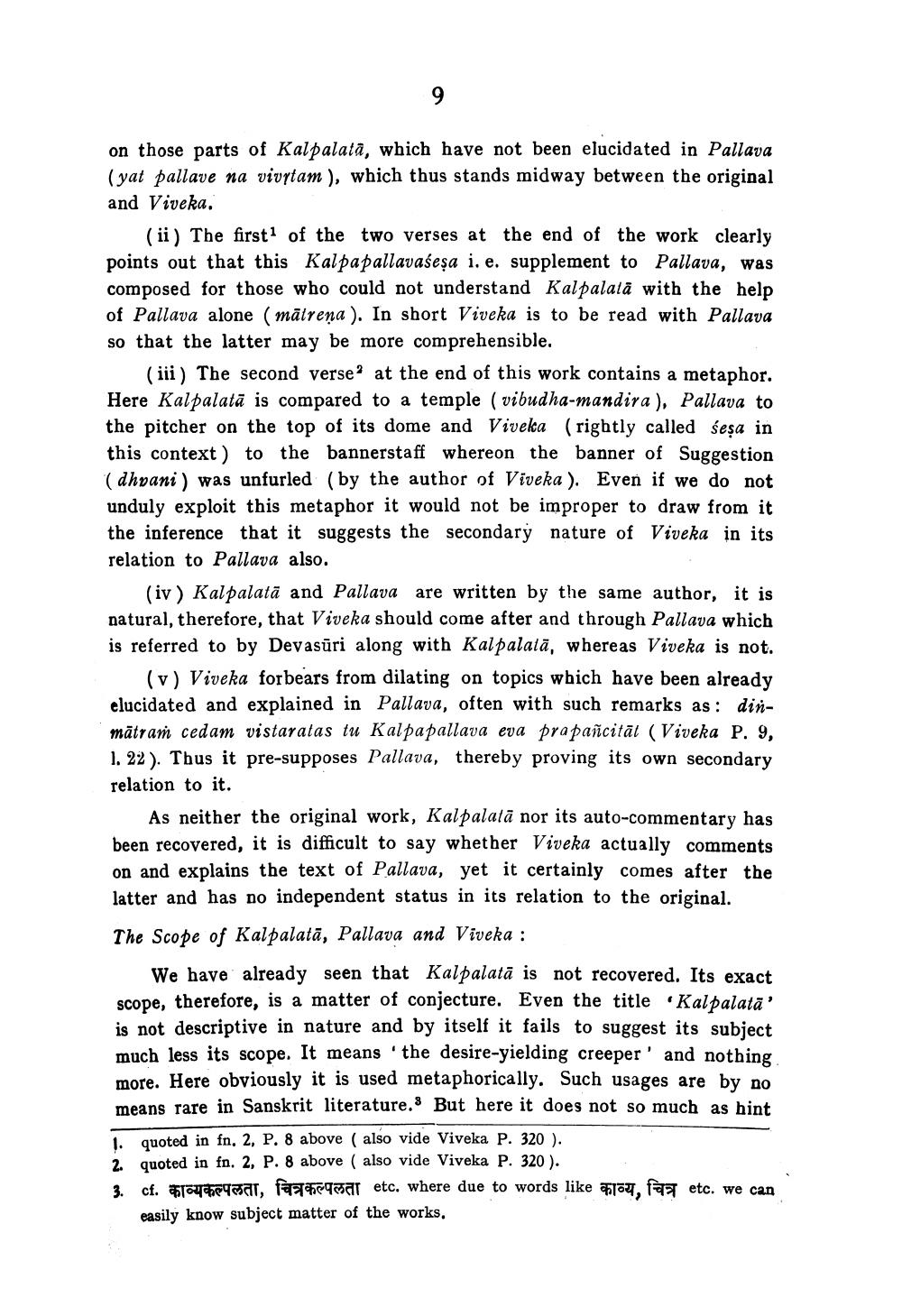________________ on those parts of Kalpalata, which have not been elucidated in Pallava (yat pallave na vivytam ), which thus stands midway between the original and Viveka, (ii) The first of the two verses at the end of the work clearly points out that this Kalpapallavacesa i. e. supplement to Pallava, was composed for those who could not understand Kalpalata with the help of Pallava alone (malrena). In short Viveka is to be read with Pallava so that the latter may be more comprehensible. (iii) The second verse' at the end of this work contains a metaphor. Here Kalpalata is compared to a temple (vibudha-mandira), Pallava to the pitcher on the top of its dome and Viveka (rightly called sesa in this context) to the bannerstaff whereon the banner of Suggestion (dhvani) was unfurled (by the author of Viveka ). Even if we do not unduly exploit this metaphor it would not be improper to draw from it the inference that it suggests the secondary nature of Viveka in its relation to Pallava also. (iv) Kalpalata and Pallava are written by the same author, it is natural, therefore, that Viveka should come after and through Pallava which is referred to by Devasuri along with Kalpalata, whereas Viveka is not. (v) Viveka forbears from dilating on topics which have been already elucidated and explained in Pallava, often with such remarks as: dinmatram cedam vistaratas tu Kalpapallava eva prapancitat (Viveka P. 9, 1. 22). Thus it pre-supposes Pallava, thereby proving its own secondary relation to it. As neither the original work, Kalpalata nor its auto-commentary has been recovered, it is difficult to say whether Viveka actually comments on and explains the text of Pallava, yet it certainly comes after the latter and has no independent status in its relation to the original. The Scope of Kalpalata, Pallava and Viveka : We have already seen that Kalpalata is not recovered. Its exact scope, therefore, is a matter of conjecture. Even the title Kalpalata' is not descriptive in nature and by itself it fails to suggest its subject much less its scope. It means the desire-yielding creeper' and nothing more. Here obviously it is used metaphorically. Such usages are by no means rare in Sanskrit literature. But here it does not so much as bint 1. quoted in fn. 2, P. 8 above also vide Viveka P. 320). 2. quoted in fn. 2, P. 8 above also vide Viveka P. 320). cf. काव्यकल्पलता, चित्रकल्पलता etc. where due to words like काव्य, चित्र etc. we can easily know subject matter of the works,




